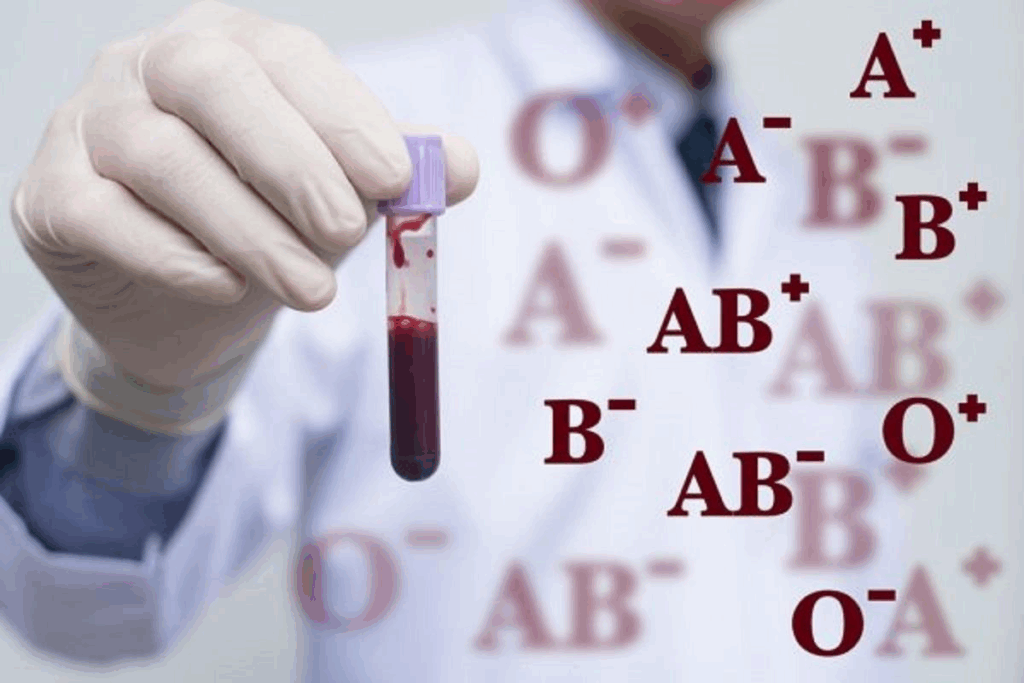Last Updated on October 21, 2025 by mcelik

Knowing about blood type inheritance is key to guessing what blood type a child might have. At Liv Hospital, we see it as more than just learning. It’s about keeping patients safe, from blood transfusions to pregnancy.
We aim to give top-notch, evidence-based care. This puts your health first. The ABO and Rh systems help us understand dominant and recessive traits. This makes your health journey safer and more informed.
Our blood type is more than just a medical fact. It’s a window into our genetic background and how it’s inherited. The ABO blood group system is a prime example of Mendelian inheritance. It shows how the presence or absence of specific antigens on red blood cells determines an individual’s blood type.
Human blood types are determined by genes that code for specific antigens on the surface of red blood cells. The ABO system includes four main blood types—A, B, AB, and O—based on the presence or absence of A and B antigens. The genetic basis of blood type is rooted in the inheritance patterns of these antigens.
The inheritance of blood types follows simple Mendelian genetics. For instance, the A and B alleles are codominant, while O is recessive. This means that an individual with the genotype AO or BO will express A or B blood type, respectively. Understanding these patterns helps us predict how blood types are passed down through generations.
Knowing one’s blood type is crucial in medical contexts, particularly in transfusions and surgeries. Incompatible blood types can lead to severe reactions. Moreover, understanding blood type inheritance can provide insights into genetic heritage and potential health implications.
Key aspects of blood type inheritance include:
The ABO blood group system is key in transfusion medicine. It tells us what blood type we have. It groups blood into four types: A, B, AB, and O. This is based on specific antigens on red blood cells.
The four main blood types are based on A and B antigens. Type A blood has A antigens, Type B blood has B antigens. Type AB blood has both, and Type O blood has none.
Antigens on red blood cells cause antibodies to form in plasma. For example, Type A blood has anti-B antibodies. Type B blood has anti-A antibodies. Type O individuals have both anti-A and anti-B antibodies. This makes their blood safe for anyone, but only compatible with Type O blood.

In the ABO blood group system, A and B alleles are codominant. O is recessive. This means AO or BO genotypes show A or B blood type. OO genotype shows Type O blood, with no A or B antigens.
Knowing these dominance relationships is key. It helps predict blood type inheritance and ensures safe blood transfusions.
We get our blood type from our parents through genetics. This involves multiple alleles and the ABO blood group system. Knowing how blood types are passed down helps us understand genetics better.
Blood type comes from our parents’ genes. Each parent gives one allele to their child. This results in the child’s blood type.
The alleles are A, B, and O. A and B are codominant, and O is recessive.
The genotype determines the blood type. Here are the possible genotypes and their blood types:
| Genotype | Blood Type |
| AA or AO | A |
| BB or BO | B |
| AB | AB |
| OO | O |
We can predict offspring’s blood types using a blood type inheritance chart. This chart shows the chances of different blood types based on the parents’ genotypes.
For example, if both parents are AO, their kids have a 25% chance of being OO (type O). They have a 50% chance of being AO (type A). And a 25% chance of being AA (type A).
So, their kids have a 75% chance of having type A blood and a 25% chance of having type O blood.
The Rh blood type system is key in blood type classification, along with the ABO system. The Rh factor is a protein on red blood cells. If you have it, you’re Rh-positive; without it, you’re Rh-negative.
The Rh-positive trait is dominant, and the Rh-negative trait is recessive. This means if you get one Rh-positive allele, you’re Rh-positive. You need two Rh-negative alleles to be Rh-negative.
The Rh factor follows a simple Mendelian inheritance pattern. We can predict if a child will be Rh-positive or Rh-negative based on their parents’ status. For example, if both parents are Rh-negative, their children will also be Rh-negative.
If one or both parents are Rh-positive, their children could be either Rh-positive or Rh-negative. This depends on the Rh-positive parent’s genotype.
| Parent 1 Rh Status | Parent 2 Rh Status | Possible Offspring Rh Status |
| Rh-negative | Rh-negative | Rh-negative |
| Rh-positive | Rh-negative | Rh-positive or Rh-negative |
| Rh-positive | Rh-positive | Rh-positive or Rh-negative (depending on genotype) |
Rh compatibility is crucial during pregnancy. If an Rh-negative mother has an Rh-positive fetus, her immune system might react. This could lead to hemolytic disease of the newborn (HDN).
To prevent this, Rh-negative pregnant women are closely monitored. They might receive Rh immunoglobulin to prevent sensitization.

Understanding the Rh factor and its inheritance is vital for managing pregnancies and blood transfusions. Knowing an individual’s Rh status helps healthcare providers prevent adverse reactions. This ensures the best outcomes for patients.
It’s important to know how blood types spread around the world. This helps us manage blood supplies better. Blood types vary a lot in different places and among different people.
Type O is the most common blood type worldwide. It’s found in about 45% of the world’s people. This is because Type O is often dominant in many groups.
Type O is common everywhere, but some places have different types more often. For example, Type B is common in Asia, and Type A is common in Europe. These differences come from genetics and how people moved around.
AB negative is very rare, found in less than 1% of people worldwide. In the United States, it’s even rarer, found in about 0.6% of the population. This makes it hard to find blood for people with this type.
Some important facts about blood types include:
Knowing these facts helps us plan and manage blood banks better.
Learning about blood type inheritance and genetics is very useful in medicine. It helps people understand their genetic makeup and the risks of blood transfusions. This knowledge is key to making better health choices.
Studying blood type genetics helps predict what blood types children will have. It’s also crucial for managing blood transfusions. This information is vital in prenatal care and surgery. We’ve looked at how blood types are inherited and their global distribution.
Healthcare professionals can give better care with this knowledge. People can also make smarter health decisions. The value of blood type research and education in medicine is clear.
Blood type inheritance is based on the ABO and Rh systems. These systems follow Mendelian genetics. The ABO system has three alleles: A, B, and O. The Rh system has Rh-positive (dominant) and Rh-negative (recessive) alleles.
In the ABO system, A and B alleles are codominant, while O is recessive. In the Rh system, Rh-positive is dominant, and Rh-negative is recessive.
Each parent gives one allele from the ABO and Rh systems to their offspring. The mix of these alleles decides the offspring’s blood type.
The possible genotypes are AA, AO, BB, BO, AB, and OO. These genotypes correspond to different phenotypes (A, B, AB, and O blood types).
No, two parents with Type O blood (OO genotype) can only have children with Type O blood. They can only pass on O alleles to their offspring.
Understanding blood type inheritance is key to predicting offspring’s blood types. It’s also important for managing blood transfusions and preventing hemolytic disease of the newborn.
Yes, blood type is determined by genetics, specifically by the ABO and Rh blood group systems.
Rh compatibility is crucial for preventing hemolytic disease of the newborn. This is especially true for Rh-negative mothers carrying an Rh-positive fetus.
Inheritance charts show the possible genotypes and phenotypes of offspring based on the parents’ blood types. They help predict the likelihood of different blood types.
Subscribe to our e-newsletter to stay informed about the latest innovations in the world of health and exclusive offers!
WhatsApp us